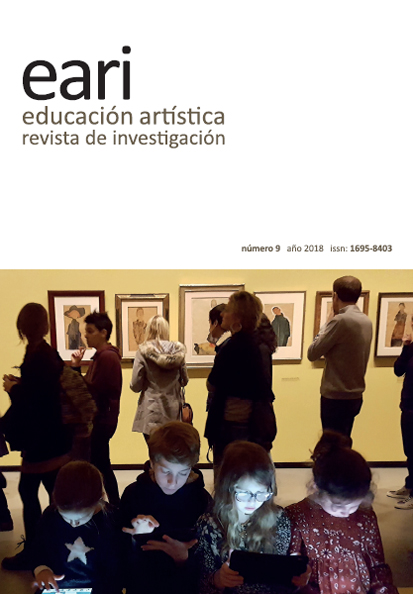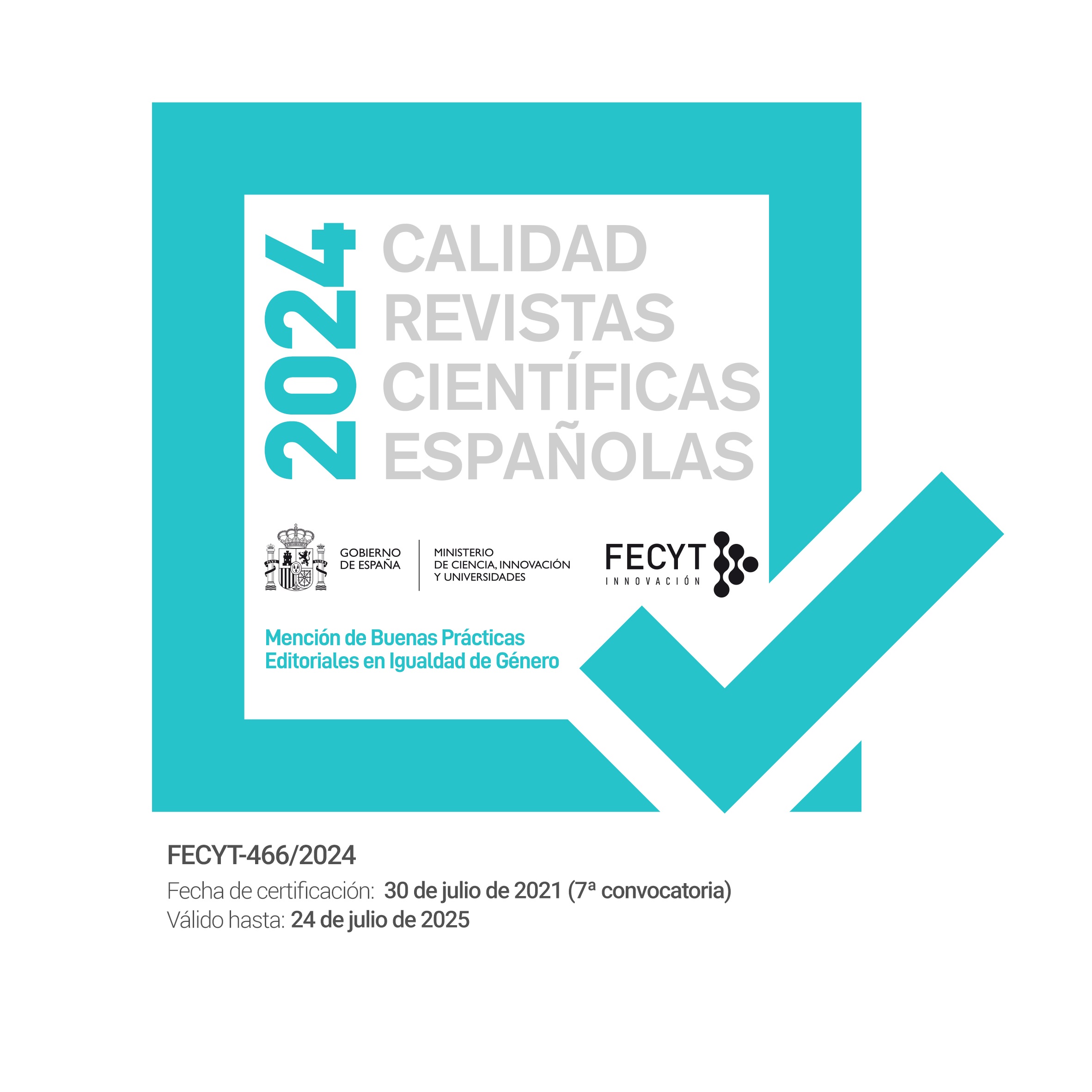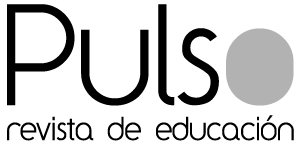Education through Art and Teacher Training: Rethink the disciplinary foundational mandate to transform the school
DOI:
https://doi.org/10.7203/eari.9.12248Keywords:
education through art, teacher training, didactic, foundational mandates, transformation, artistic languages Abstract
Abstract
The following article proposes to reflect on the theoretical postulates of education through art and its articulation with teaching practices in the teaching formation of the southern suburbs of the province of Buenos Aires, Argentina.
It is argued that future teachers have lived few training experiences with education through art philosophy. This data is evident in their school biographies and shows the validity of the disciplinary origin of the modern school.
Consequently, it is committed to the transformation of its founding mandates, in terms of objectification of the subject for the factory production.
To this end, it is described the evolution of Didactic (highlighting the counter hegemonic movement of the New School) and is theorized especially about the interpretative and proactive nature of this science today.
In this framework, the value of artistic languages is reflected on; and we invite you to add them to the repertoire of the didactic components to be taken into account when creating a teaching situation that promotes significant, contextualized and aesthetic learning.
Some experiences are presented as an example and as a contribution to the higher level educacional group.
 Downloads
Downloads
 References
References
Akoschky, J. (1998). Música en la escuela, un tema a varias voces. En J. Akoschky, et al., Artes y escuela: aspectos curriculares y didácticos de la educación artística (pp. 173-208). Buenos Aires: Paidós.
Consejo Latinoamericano de Educación por el Arte. (2015, septiembre). Carta de Montevideo 2015. Recuperado el 10 de Octubre de 2016, de http// www.redclea.org/publicaciones/cartademontevideo2015.
Constitución “International Society for Education though Art” (2008). Recuperado el 10 de Octubre de 2016, de http//www.insea.org/acercade/constitución
Díaz Barriga, F. (2003). Cognición situada y estrategias para el aprendizaje significativo. Revista electrónica de Investigación Educativa, 5(2). Recuperado de http://www.redalyc.org/articulo.oa?id=15550207
Dirección General de Cultura y Educación de la Provincia de Buenos. (2007). Diseño Curricular para la Educación Superior. Niveles Inicial y Primario. La Plata.
Ferrero, M. y Martín, M. (2013). ¿La comunicación no verbal influye en el clima áulico? Buenos Aires: Editorial Biblos.
Gervasio, N., Grasso, M. (2015) Desandar las huellas de la Modernidad: cuerpo disciplinado / cuerpo liberado. Ponencia presentada en VIII Jornadas Nacionales y I Congreso Internacional sobre la Formación del Profesorado: Narración, Investigación y Reflexión sobre las prácticas. 29, 30 y 31 de octubre de 2015. Universidad Nacional de Mar del Plata.
Iglesias L. (1950) Viento de estrellas. Antología de creaciones infantiles. Recogidas en la Escuela Rural N° 11 de Esteban Echeverría. Tristán Suárez F.C.N.G.R. Prov. de Buenos Aires-República Argentina.
Iglesias, L. (1979). Didáctica de la libre expresión. Buenos Aires: Ediciones Pedagógicas.
Read, H. (1977). Educación por el Arte. Buenos Aires: Ed. Paidós.
Spravkin, M. (1998). Enseñar plástica en la escuela: conceptos, supuestos y cuestiones. En J. Akoschky, et al., Artes y escuela: aspectos curriculares y didácticos de la educación artística (pp. 93-132). Buenos Aires: Paidós.
Steiman, J. (2004) ¿Qué debatimos hoy en la Didáctica? Las prácticas de enseñanza en la educación superior. Buenos Aires: Baudino Ediciones.
Steiman, J. (2011). ¿Qué puede aportar hoy la didáctica? Novedades Educativas, 249.
Downloads
Published
How to Cite
-
Abstract1417
-
PDF (Español)842
Issue
Section
License
![]()
Educación artística: revista de investigación (EARI) retains the proprietary rights (copyright) of published works, and favors and allows the reuse of the same under the license Creative Commons Attribution-Noncommercial Use 4.0 International License (CC-BY-NC 4.0), which allows third parties to use the published material whenever the authorship of the work and the source of publication is mentioned (journal, publisher and URL of the work), and it is used for non-commercial purposes.
Authors are encouraged to disseminate their work after it has been published, through the internet (for example, in institutional archives online or on its website) which can generate interesting exchanges and increase work appointments.








